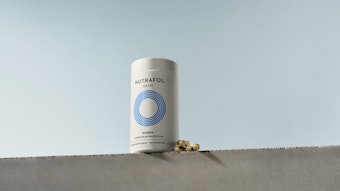Recent industry market reports suggest two trends are here to stay—antiaging and naturals. Consumers demand skin care products that offset aging by preventing solar and environmental oxidative damage; in addition, they now expect these products to do so naturally.
Joseph Laszlo, PhD, lead scientist for the US Department of Agriculture’s (USDA) Biocatalytic Functionalization of Plant Lipids project, and his team have developed a process through which vegetable oil, in this case soybean oil, can be given antioxidant and UVA/UVB protective capabilities. FSG (INCI: Feruloyl Soy Glycerides)a was developed by swapping out the fatty acids in vegetable oil with ferulic acid, and while the team initially investigated this material’s sun protective abilities, it is now focused on its antioxidant benefits.
Feruloyl Soy Glycerides
Nearly 10 years ago, Laszlo and his team were charged with finding new uses for vegetable oil, possibly for skin care, at which point the team came up with the idea of replacing one of the fatty acid groups with ferulic acid. “Ferulic acid has been studied for decades for its antioxidant capability,” noted Laszlo. However, he also conceded that ferulic acid is both difficult to formulate with and unstable. The team therefore put ferulic acid into soybean oil to stabilize it and improve its usability; first, however, the team had to make it soluble in vegetable oil.
“To make ferulic acid soluble in vegetable oil, we first obtained the ethyl ester of ferulic acid, as ferulic acid is a carboxylic acid like many fatty acids available,” said Laszlo. At the right temperature, both ferulic acid and soybean oil are liquid and miscible. So, a combination of ferulic acid ethyl ester with soybean oil was passed over a bed of immobilized enzyme. “The enzyme is called a lipase, and this lipase exchanges fatty acids for the ferulic acid on the glyceryl backbone of the vegetable,” explained Laszlo. The end product reportedly exhibited both antioxidant and photoprotective capabilities. Since the material is not approved by the US Food and Drug Administration (FDA) as a sunscreen, its application as such is limited; therefore, research has shifted toward its ability to protect against oxidation.
Antioxidant Capability
Laszlo and his team conducted a number of assays to assess the material’s antioxidant activity and when it performed well, a further assay was carried out by taking soy glyceride and incorporating it into model membranes—phospholipid membranes that surround the cells. “We found that the material incorporated into the membranes without affecting their physical barrier/stability. It did not adversely change [their] integrity.”
The team sought to incorporate antioxidant capability into the phospholipid membranes. “A lot of the damage caused by reactive oxygen species (ROS) is in the membranes of cells where polyunsaturated lipids exist in the phospholipids, and those get oxidized rather easily by ROS. We found that [this] molecule worked very well at preventing that from happening,” said Laszlo. Beyond their photoprotective and antioxidant capabilities, feruloyl soy glycerides were found to have a number of formulation benefits.
Formulating with FSG
“When you create certain types of esters of ferulic acid, the antioxidant capability goes down,” said Laszlo, who furthered that in the assays, ferulic acid in glyceride form worked better than ferulic acid alone.
In addition, as previously noted, Laszlo explained that ferulic acid can be challenging to incorporate into formulations. “Ferulic acid does not formulate easily and it is rather unstable. ... [However], soy glycerides allow ferulic acid to be easily incorporated into formulations, as the acid is converted to a liquid material at room temperature.” The feruloyl soy glycerides can also benefit formulations as a solvent, according to Laszlo. “People might find uses for it just because it improves their formulations,” he said.
The team is currently investigating whether feruloyl soy glycerides penetrate the skin. “There are a lot of ingredients that go into a formulation, and this material could help those ingredients penetrate the epidermis, thereby increasing their efficacy. We are looking [into] how much they penetrate and what do they do in the epidermis,” Laszlo explained. The ability of feruloyl soy glycerides to penetrate the epidermis has great potential for sun care, according to Laszlo, where they could improve sunscreen absorption.
The conversion process utilized by the company to add ferulic acid to vegetable oil can be applied to a broad range of materials, including “a number of phytochemicals that might offer skin care attributes,” said Laszlo, who added that current research in this area will be published within a year. In the meantime, Laszlo’s colleagues are using the material for other applications—protecting crops from the sun, or offering a vegetable oil with health benefits for cooking—all of which are environmentally conscious.
Laszlo concluded, “This conversion process is what I call green chemistry. There is no waste generated, no harsh solvent employed and the catalyst can be used for months at a time.”










